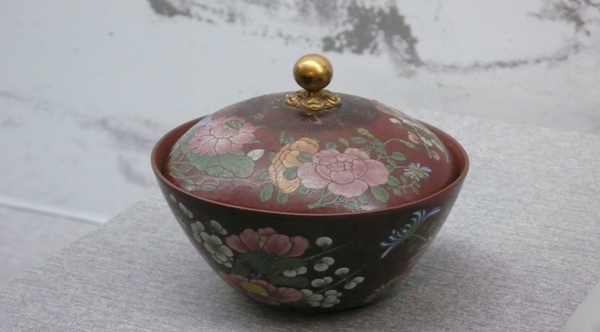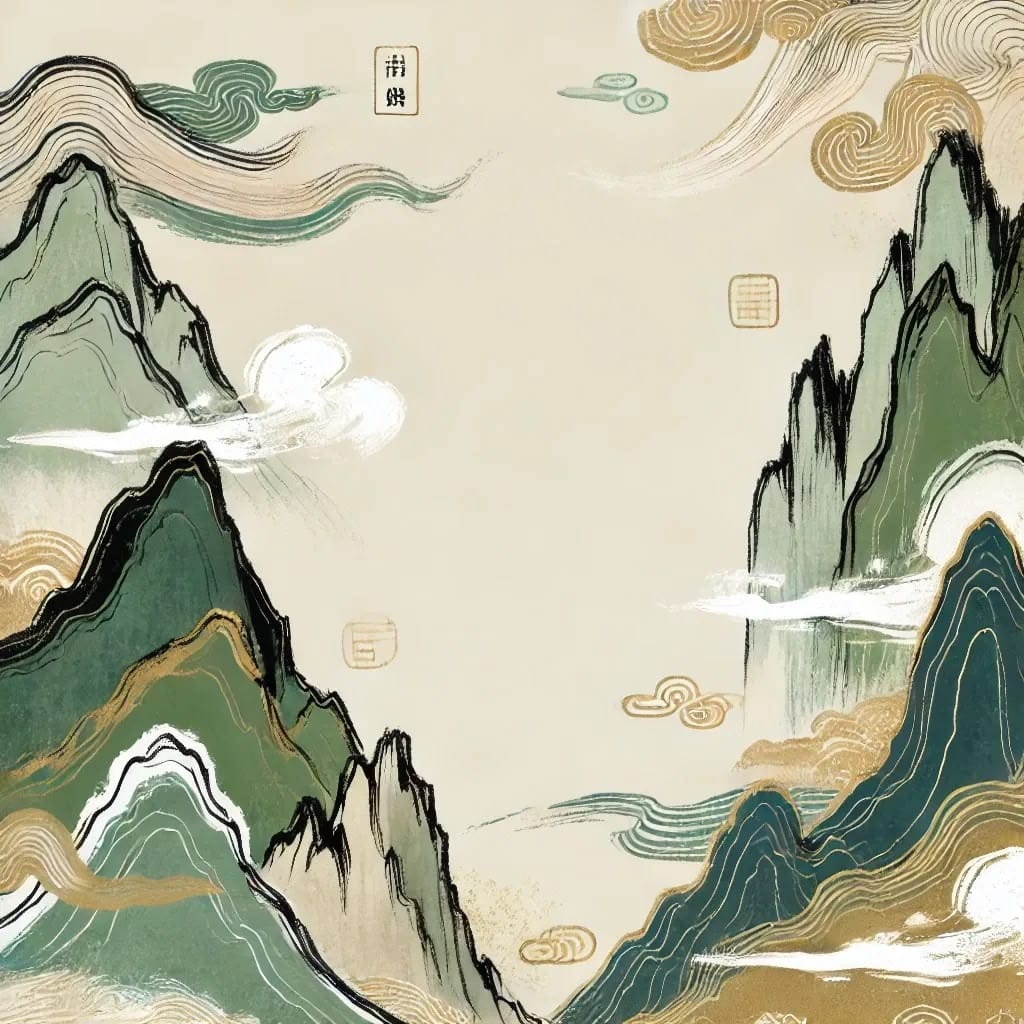Every time we hold a tea cup, feeling its warmth in our palms and brushing our fingertips along the rim, have you ever wondered—this is not just a vessel for tea, but an aesthetic carrier that contains the cultural codes of millennia?
Like a silent old friend, the tea cup has quietly accompanied the development of Chinese culture, witnessing the changes of dynasties, yet it is rarely "read" seriously. Today, let us step into the world of the tea cup, unravel the cultural symbols hidden in its glaze, shape, and patterns, and discover the extraordinary stories in the seemingly ordinary tea cup.
The Beauty We Have Overlooked: The Distance Between Modern People and Tea Cups
Think about it: when you pick a tea cup, what do you consider?
"This cup looks nice," "It feels good to hold," "The price is reasonable," or "It's the right size..."
Yes, these are all important. But for those who love traditional Chinese culture, we face a regret: we don’t know how to decode the rich cultural symbols and aesthetic meanings behind the tea cup.
This challenge mainly comes from three aspects:
- We have gradually distanced ourselves from traditional culture and lack an understanding of the historical context behind tea cups.
- The patterns, shapes, and glazes on the tea cup often carry specific cultural codes, but we do not know how to decipher them.
- The functionalist mindset of modern life makes us accustomed to evaluating tea cups from a practical perspective, overlooking their significance as cultural carriers.
"Just a cup, what's there to be particular about?" This kind of thinking may be a manifestation of the loss of connection with traditional culture.
From Vessel to Symbol: A New Perspective to Decode the Tea Cup
To truly understand the cultural codes behind tea cups, we need a brand-new perspective. Like decoding a secret message, once we have the key, those seemingly simple lines, colors, and shapes will tell us their cultural significance.
Let me share with you the "Tea Cup Cultural Code Decoding Framework," a method to decode the symbolic meaning of tea cups from four dimensions:
- Shape Code: Every shape tells a story
The shape of a tea cup is never arbitrary. It often reflects the aesthetics, usage, and social status of a particular era:
When you see a "cone-shaped bowl" with a wide opening and a smaller base, you're looking at a practical necessity for the Song Dynasty’s tea-whisking method and the minimalist aesthetic of that time. People in the Song Dynasty would place powdered tea into the bowl, add water, and whisk with a bamboo whisk to create foam. This method of drinking tea required a particular bowl shape to present the beauty of the foam.
The straight-walled cup that became popular in the Ming Dynasty was suited for loose-leaf tea, which not only serves a practical function but also reflects the revolutionary changes in tea-drinking methods and the Ming people's aesthetic return to simplicity.
Do you notice a circular raised "jade-like foot" at the bottom of the cup? From Tang Dynasty Yue ware to Song Dynasty Jian kiln black-glazed ware, this design not only stabilizes the cup but also symbolizes a cultural pursuit of steadiness and elegance.
In this way, the open or closed rim, deep or shallow body, thin or thick wall of the cup all silently narrate the lifestyle and aesthetic pursuit of specific eras. - Glaze Code: Color Beyond the Visual, a Cultural Choice
The glaze color is not just a visual element; it is a reflection of cultural choices and aesthetic inclinations:
The elegant and refined green glaze is like the "azure sky" praised by Tang Dynasty poets, symbolizing the noble character pursued by scholars. Tang and Song Dynasty Yue ware green porcelain, with its delicate greenish glaze, was praised by Lu Yu as "Yue porcelain resembling jade," a recognition of its beauty.
The deep and heavy black glaze represents the introverted nature of Song Dynasty literati. The black glaze tea cups from Jian kiln in the Song Dynasty have a lustrous dark glaze that occasionally shows iridescent colors under light. This elegant introversion was highly praised by Song literati.
The "ivory white" glaze of the Ming Dynasty Dehua kiln, white as jade and translucent, was referred to by the West as "China white," symbolizing purity and elegance. It also became an important symbol in cultural exchanges between China and the West.
Each glaze color is not only a visual sensation but also a cultural attitude—a specific understanding of life. - Pattern Code: A Symbolic World of Flowers, Birds, Insects, and Fish
The decorative patterns on tea cups often carry specific cultural meanings and auspicious implications:
When you see a lotus pattern on a tea cup, it is not just a decoration; it embodies the Buddhist idea of "emerging from the mud without being stained," symbolizing purity and nobility.
Dragon and phoenix motifs represent authority and nobility, often seen on imperial kiln wares, reflecting the strict hierarchical system and social structure.
Those botanical patterns express a closeness to and love for nature, embodying the aesthetic ideal of "harmony between man and nature" among scholars.
Some tea cups even feature poetry, combining literature and ceramics to create a multi-layered cultural experience. This is a unique expression of Chinese literati, turning life into an art form. - Usage Code: Silent Narration of Lifestyles
The design and use of the tea cup also reflect specific social activities and cultural rituals:
In the Song Dynasty's tea whisking method, the pairing of cups with saucers represented a refined attitude towards life and a complete sense of ritual.
The differences between Chinese and Western tea utensils, such as Chinese tea cups typically lacking handles while Western tea cups often have handles, reflect differences in tea-drinking habits and social customs between the two cultures.
The nested cup design of the Ming and Qing Dynasties showcases a layered aesthetic of life and a meticulous attention to detail.
These design choices are not accidental but are concrete representations of lifestyles and values under specific cultural contexts.
Cultural Dialogue Across Space: Three Examples That Make Tea Cups "Speak"
- Jian Kiln Black-Glazed Tea Cup: The Aesthetic Mark of Song Dynasty Literati
Imagine holding a Jian kiln black-glazed tea cup, its glossy black glaze adorned with silver-like spots. These spots, called "pheasant spots," are not just decorative; they symbolize the cosmic stars.
Song Dynasty poet Huang Tingjian wrote in "Xijiang Yue: Tea": "Rabbit-brown golden silk treasure bowl, pine wind crab-eye new soup," closely linking the beauty of the tea cup to the tea-drinking experience.
The black glaze represents the profound universe, and the spots resemble twinkling stars. A cup of tea seems to contain a miniature universe. This is an embodiment of the Song Dynasty's Neo-Confucian idea of "one flower, one world" in material form, as well as the literati's pursuit of nature and simplicity.
When you drink from such a tea cup, you are not only drinking tea but also engaging in a spiritual dialogue with Song literati across time. - Dehua White Porcelain: Cultural Confidence of "China White"
The Dehua white porcelain tea cup from the Ming Dynasty has an unforgettable pure glaze color. Known in the West as "China White," it not only changed the aesthetics of Chinese tea ware but also influenced the development of European porcelain arts.
The Dehua white porcelain is characterized by its delicate body and white, smooth glaze, giving it a jade-like texture. This white is not just a color choice but reflects the Ming literati's pursuit of authenticity and their admiration for nature.
The literatus Chen Jiru once praised it: "The powder is luminous and pure, like snow, like jade, it is the finest in ceramics." This purity of white has become a universal aesthetic language bridging both Eastern and Western cultures, making Dehua white porcelain a cultural ambassador for China to the world.
Interestingly, some people have noticed that tea brewed in Dehua white porcelain has a brighter color and a smoother, sweeter taste with less bitterness. This perfect combination of practicality and aesthetics is a hallmark of traditional Chinese craftsmanship. - Jizhou Kiln Wood Leaf Pattern Tea Cup: A Poetic Expression of Nature
The wood leaf pattern tea cup from the Southern Song Jizhou kiln uses a unique paper-cutting technique: black glaze is first applied to the cup’s surface, then leaves are affixed to it, and a final layer of glaze is applied before firing. The leaves burn away in the high temperature, leaving only their outlines, creating a unique visual effect.
This is not only a technical innovation but also a cultural expression—fallen leaves in Chinese culture are often associated with the literati’s hidden desires, symbolizing a longing for nature and a pursuit of authenticity in life.
The marks of each leaf are different, just as Song poet Lu You wrote: "Monks love fine ware, each with snow-white hair and frosted beard." This reflects the literati’s appreciation for the beauty in life's details.
When you see these natural leaf veins preserved on the tea cup, it feels as though you are experiencing the Southern Song literati’s deep thoughts on nature, art, and the relationship between eternity and the fleeting moment.
Reunion with an Old Friend: How to Start Your Journey of Tea Cup Symbol Decoding
Decoding tea cup symbols doesn’t require deep expertise; it's more like rediscovering an old friend. Here are a few practical suggestions to help you start this beautiful journey:
- Start with a tea cup near you: You don’t need an antique; just begin with the tea cup you use every day. Observe its shape, glaze, and pattern, and think about why it is designed that way.
- Apply the four-dimensional analysis: Try to think about the cultural meanings behind the tea cup from the four dimensions of shape, glaze, pattern, and usage.
- Build cultural connections: Learn when this style of tea cup first appeared, how people used it, and what their lifestyles and aesthetic tastes were like.
- Record your discoveries: Write down your observations and thoughts, and over time, you'll find that your understanding of tea cups deepens.
- Share with friends: Organize a small "tea cup decoding" gathering, where each person brings their favorite tea cup and shares their observations and interpretations.
This process will not only enhance your understanding of tea culture but will also transform your daily tea-drinking into a culturally enriched experience.
The Universe in Your Palm: The Tea Cup, a Multidimensional Cultural Symbol
The tea cup is not just a vessel for tea; it is a cultural symbol system that embodies the wisdom of artisans, the aesthetics of scholars, social customs, and philosophical ideas. By decoding it through the four dimensions of "shape symbol," "glaze symbol," "pattern symbol," and "usage symbol," we can see a vast cultural universe within a small tea cup.
When we hold a tea cup, we are not just drinking tea; we are engaging in a spiritual exchange with artisans, scholars, and philosophers from centuries ago. This cultural dialogue not only enriches our life experiences but also revitalizes traditional culture in modern life.
So, the next time you pick up a tea cup, take a moment to look at it, think about it, and feel the cultural warmth in your palm. In this fast-paced world, the time spent with a cup of tea may be the perfect opportunity for us to reconnect with traditional culture.
The tea cup, this seemingly ordinary everyday item, might just be the key to entering the world of traditional aesthetics—a cultural symbol that connects the past and the present, a warm dialogue that transcends time.
Come, let's begin this journey of decoding the tea cup and rediscover the cultural universe hidden in our palms.


